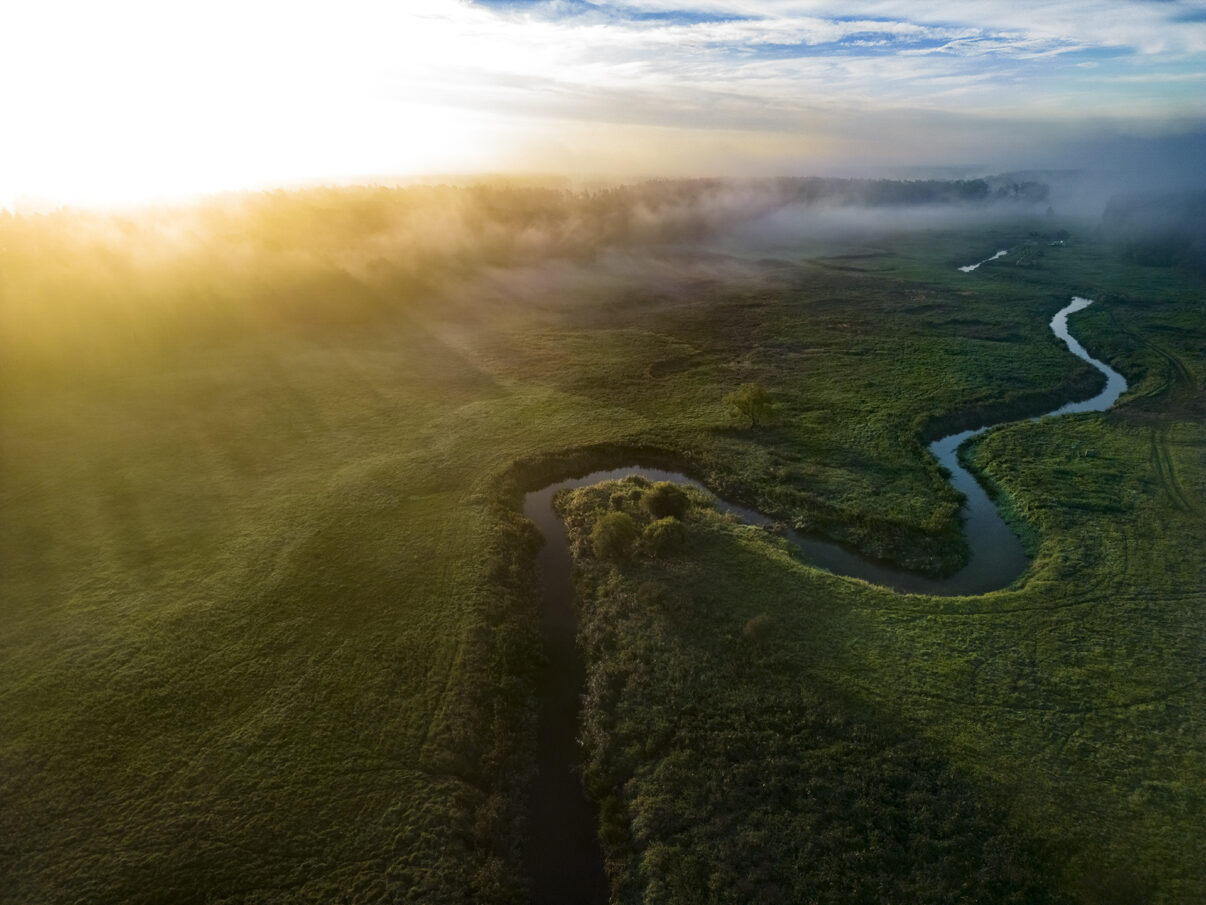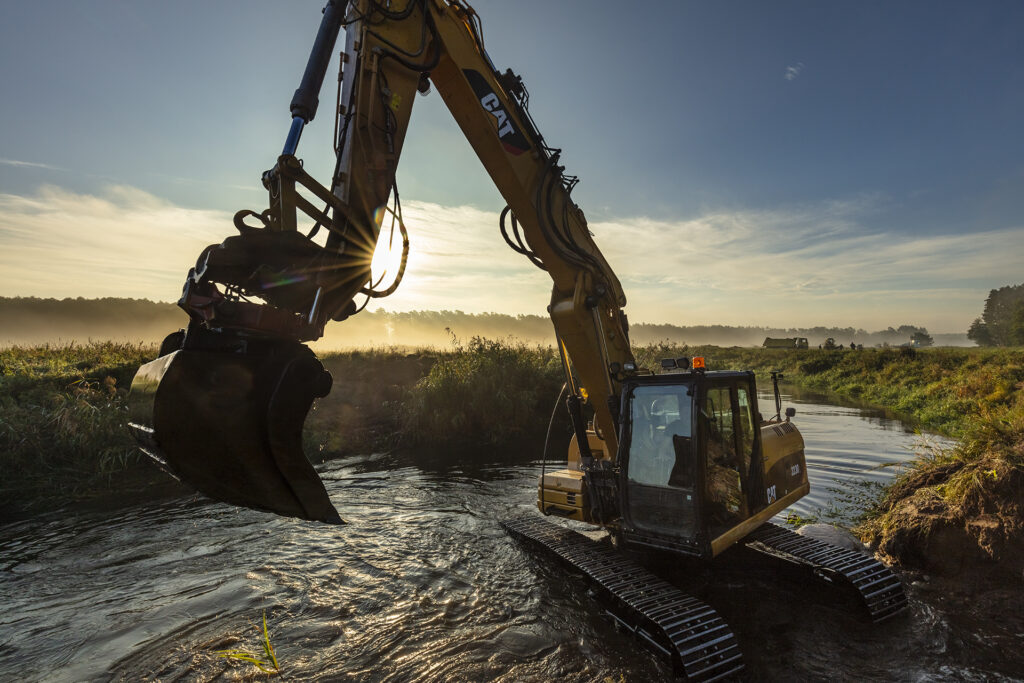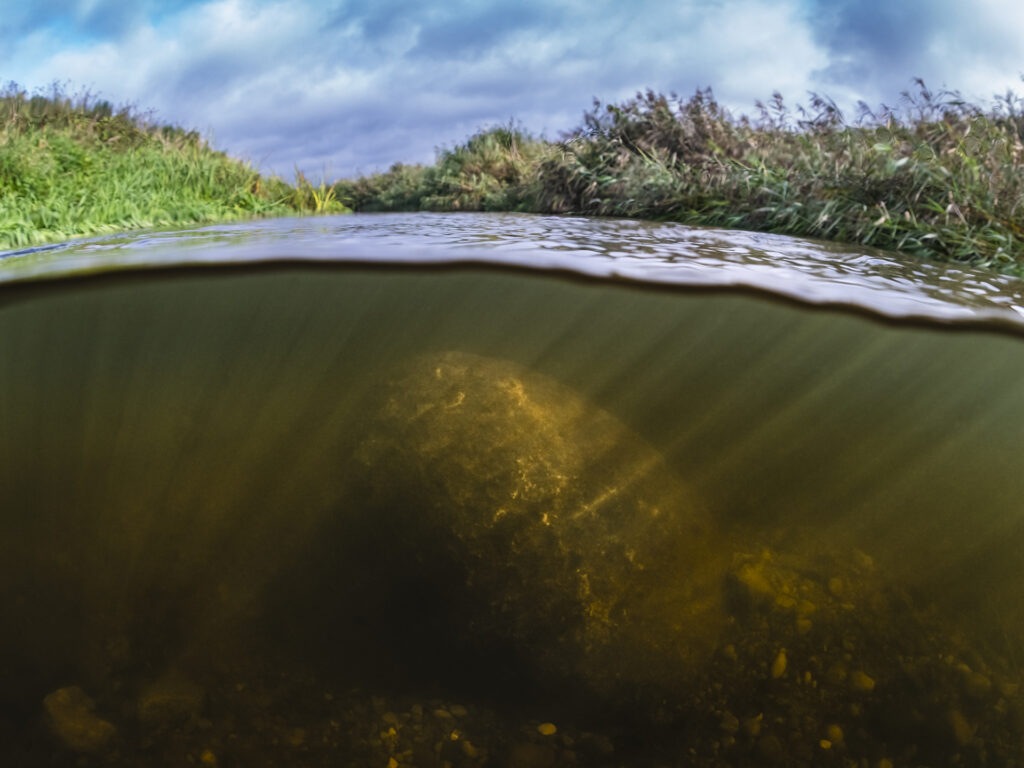Healthy, free-flowing rivers governed by natural processes offer a wide range of benefits for wildlife and people. This autumn, the Oder Delta rewilding team and local partners carried out a range of measures to restore the Ina River – an important tributary of the Oder River.

The importance of healthy rivers
Rivers harbour some of the richest biodiversity on earth and provide an array of benefits to people. Healthy, free-flowing rivers which are well-connected with surrounding landscapes offer a wide range of habitats for wildlife species. Such “riverscapes” also help to purify water and reduce the risk of flooding in times of heavy rainfall.
Across much of Europe, however, many streams and rivers are in poor ecological condition, which means the benefits they deliver are diminished. This is the case in the cross-border Oder Delta rewilding landscape, where riverbeds have been artificially straightened, deepened, and embanked in many places, the free flow of water has been restricted by barriers such as dams and weirs, and the immediate surroundings of rivers drained and reclaimed for human activity. Channelising rivers increases the speed of water flow, increases erosion, reduces the amount of sediment in the water, and reduces the diversity of riverbed habitats which are essential for species such as fish and insects.

Riverbed restoration
In collaboration with local partners, the Oder Delta rewilding team are working to restore local waterways through a range of rewilding measures. These include rewetting wetlands near rivers to increase water storage, planting riparian trees to provide shade and lower water temperatures, removing barriers to increase habitat connectivity, and supporting riverine species by restoring spawning grounds, which typically involves adding stone and gravel in locations where it should occur naturally.
In the autumn this year, the rewilding team carried out restoration work on a small stretch of the 126-kilometre-long Ina River, which flows into the Oder River and has a roughly 2000 square-kilometre catchment area. Together with local partners, the team managed the construction of raised stone and gravel features on the riverbed (called “prisms”) at three sites, near the village of Strumiany.
“Laid in a riverbed in a well-thought-out way, the addition of gravel and stone prisms, and the riffle-pool sequences they create, is extremely important for the natural functioning of a river,” explains hydrobiologist and Rewilding Oder Delta board member Artur Furdyna. “As a rewilding measure, it helps to diversify water flow, thereby improving the living conditions for aquatic animals and plants.
“Such prisms also help to stabilise the water level and restore the natural flow of water across the entire catchment. This, in turn, benefits people by enhancing water retention, increasing the availability of clean water and reducing the risk of floods and droughts, boosting the filtration of agricultural chemicals, and mitigating climate change through enhanced carbon storage.”

Tree planting
On October 20, to coincide with International Landscape Day, the Oder Delta rewilding team collaborated with Polish NGOs The Society of Friends of the Ina and Gowienica Rivers and A Magical Corner – as well as volunteers from the town of Goleniów and the village of Sowno – to plant around 100 willow saplings along the Ina.
“In its natural state the banks of the Ina River were lined with trees, mostly willows, alders and spotted oaks, some of which were over 100 years old,” explains Artur Furdyna. “But many of these trees disappeared as a result of the drastic lowering of the riverbed and prolonged low water levels. Replanting trees in clumps will help to recreate a landscape mosaic favourable to many animal and plant species – both on the banks and in the river itself.”

In general, riverside trees provide numerous benefits. They can help the self-cleaning process of a catchment area by capturing nutrient run-off. They also create niches for mosses and aquatic lichens, and habitat for birds and insects, which helps to enhance biodiversity. Tree roots stabilise riverbanks and reduce erosion. And the partial shading of rivers by trees, when combined with the addition of gravel and stone piles, also helps to stabilise the temperature of the water, which can benefit a wide range of wildlife species, particularly fish. In river valleys such as that of the Ina, trees also act as a natural flood barrier.
The tree planting day was a great way for members of the local community to come together, socialise, and learn about rewilding.
“It’s great to see the number of volunteers and activists grow with each rewilding activity,” says Magdalena Urlich, a tourism and entrepreneurship specialist who organised the event on behalf of Rewilding Oder Delta.
The rewilding measures carried out on the Ina were part of the “Promoting wildlife comeback on the Ina River” initiative, which is financed by the European Outdoor Conservation Association (EOCA), and the “Rewilding the Ina River for a cleaner Baltic Sea” initiative, which is financed by the BaltCF Fund.
